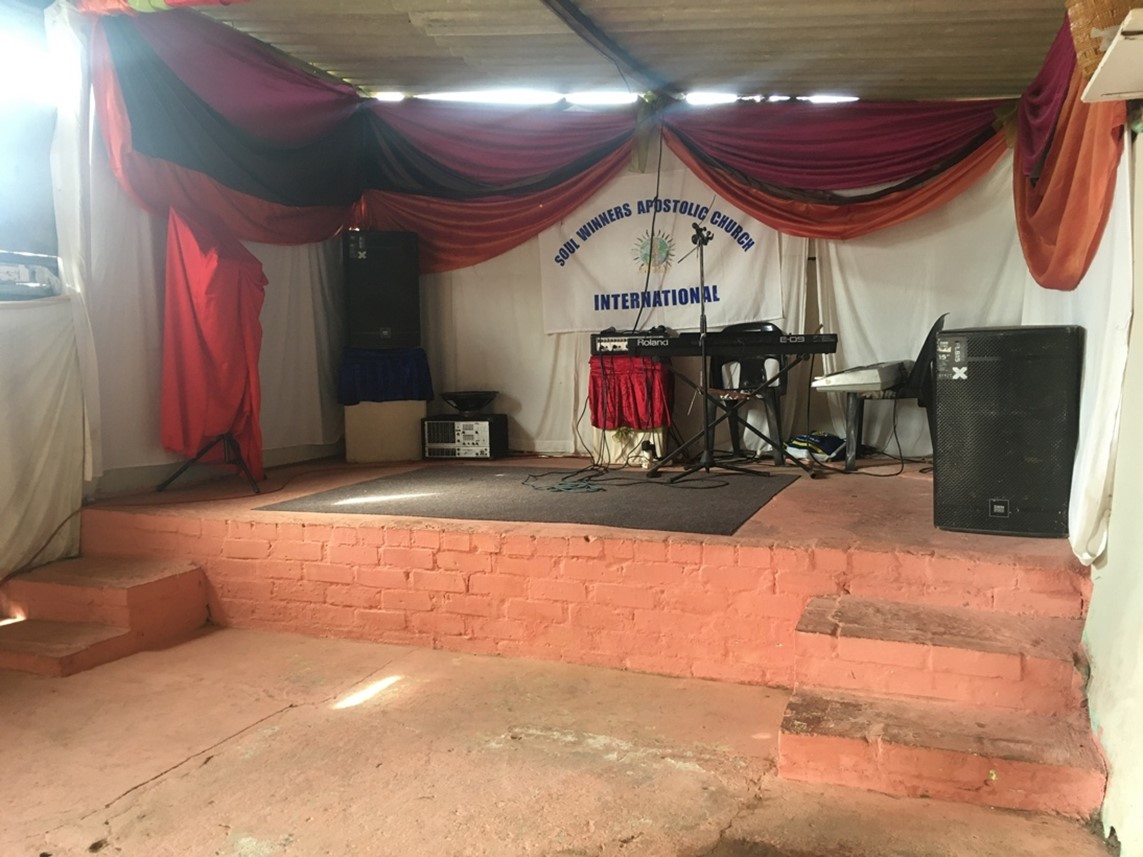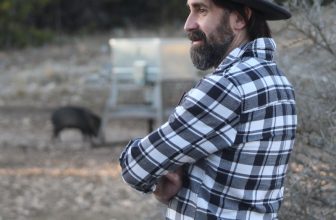Article begins
A joke circulating among conservative Christians tells, tongue-in-cheek, of a devout Calvinist pastor who, when asked who he knew for certain was “saved” and destined for eternal repose in heaven, replied he could only testify to two, himself and his wife, “and sometimes I have my doubts about her!” Told between bites of coffee, tea, and rusks in the lighthearted moments of socializing after weekly church services in Johannesburg, such quips and stories evoke a sense of conviviality, of not taking oneself too seriously. However, it also reveals the life-or-death stakes of an evangelical cosmology dividing humanity between the saved and the lost, self and other. As anthropologist Susan Harding has written of the power of narrative to construct potential converts’ identity, American evangelicals first must recognize a sense of sin and brokenness and ultimately come to see a faith in Jesus Christ as the exclusive path to salvation from eternal separation from God. In my time working with evangelicals in South Africa, I witnessed countless times people observed and interrogated those around them, including me, to place where newcomers fit. This question can be asked directly, but more often it is posed through the detection and interpretation of subtler signs. The trouble comes when those signs appear to give off contradictory signals.
My own burgeoning capacity to decipher these signals was put to the test in January 2022, when I was invited to interview a pastor, Nyaniso, whom I had never met before but whose work I had been recommended to follow further. All I knew prior to our first face-to-face meeting was that he ministered predominantly to the people of a small coastal township on the outskirts of East London, in South Africa’s Eastern Cape Province. His son had put us in touch with one another, and I walked up to his residence in the township unsure of his denomination, “style” of Christianity, or connection to other pastors in the area I had interviewed. As he had been delayed in getting back to the township, a family member greeted me and directed me to await his arrival in the small chapel built on his homestead. As I looked around the quiet room, I immediately noticed a small stage filled with musical instruments.
Credit:
Douglas Bafford

An array of musical instruments at Nyaniso’s church, Eastern Cape Province, South Africa
What possible messages did this array of instruments convey to me as an outsider? Despite not being present to hear their use, I could almost imagine them belting out the boisterous, loud, and lively rhythms of contemporary rock genres, complete with multiple electric keyboards and a loudspeaker for good measure. A common feature of charismatic and Pentecostal Christianity, which has achieved such explosive growth across Africa and in the postcolonial world more widely, is the loud, energetic, and percussive music of megachurches, often transforming into exhortations unconstrainted by the bounds of traditional hymns and fading into a seemingly polyphonic blend of glossolalia, spiritual healing, and possession by the Holy Spirit. In contrast to my initial impressions, though, his Christianity was one more aligned with the anti-charismatic undercurrents among some evangelical critics. Many of these Christians, although still quite conservative socially and theologically, often positioned themselves as a foil to what they described as a misguided expression of ecstatic, embodied faith in the “gifts of the Holy Spirit.” In turn, such criticism echoes a long history of colonial European judgements of African lifeways as chaotic, unstructured, and undisciplined.
In the messy reality of everyday life, however, these “factions” ought not to be seen as clearly demarcated but are themselves open to fluidity and contestation. The distinctives of Pentecostal worship often become the target of sermons and fodder for lively debates among congregants over their legitimacy. Christians at one of the churches I spent time with bantered over Pentecostals’ habit of hosting all-night prayer sessions, in which people chant, sing, cry out, and pray in an exuberant display of connection with the Holy Spirit. While some derided such displays as excessive or “merely” performative, one young man suggested his Christian brethren could learn a thing or two from such piety. Perhaps if his fellow congregants were willing to sacrifice ordinary comforts and elevate the praise of God outside of a routine, structured religious service, he proposed, they could attain a more intimate and maybe even “authentic” relationship with the Holy Spirit, something that might only be talked about in abstractions in his own church. For Nyaniso, too, conventional linkages between a liturgical style and a particular theological bent were blurred, as he explained to me, given his willingness to borrow the musical styles even of those churches from whose theologies he distanced himself.
Even if the boundaries between these demarcations are not set in stone, a tremendous degree of time and local concern is devoted to figuring out who is in which camp. A practical difficulty of confusion in the terms themselves arises from the tendency for competing groups to share the same labels in reference to themselves: “evangelical,” “Bible-believing,” or even just “Christian” without any modifiers, assured as they are of their own representation as the most legitimate form of Christianity. Adding to this definitional ambiguity is a recurrent theme within Christian theology of the disjuncture between appearance and reality, with the threat that outward piety is often a mere façade that belies a hidden truth of sinfulness, as in the proverbial case of the Pharisees whose attention to ritual propriety stoke Jesus’s ire. Even subtle linguistic cues serve as a means for teasing out a stranger’s stance on just how widely to cast the proverbial net of salvation. For instance, a Christian makes a casual reference to a moment in her life when she was saved, entirely removed from various other milestones non-evangelicals might center: baptism, confirmation, joining as a church member, marriage, etc. To make a casual reference to efforts to “spread the Gospel” or talk of the “believers” as a clearly defined group can be a powerful shibboleth, excluding even members of mainline churches that may nonetheless constitute their own set of believers who spread the Gospel, ironically enough.
What does it mean to refer to “conservative” Christianity at all, to return to a label with which I opened? Just as Christianity comprises a world of complex nuances, differences both theological and cultural that the diverse set of people who identify as Christian must navigate, so too is contemporary conservatism a hotbed of entangled movements, impulses, and discursive patterns, not all of which sit together comfortably. Starting at the simplest level of the term’s literal meaning, we might ask what specifically people are trying to “conserve” in the first place. How might social conservatives who perceive a crisis of contemporary moral order see their activism in relation to populists who decry shifts in demographic, economic, or cultural status quos? Might they find good reason to affiliate with other diverse actors labeled as “right wing,” or could they read their work as in tension with one another? By convention, the notion of conservatism in apartheid and post-apartheid South Africa might have been linked with an effort by white minorities to conserve or restore their exclusive access to wealth, land, labor, and electoral power, which has conditioned expressions of longing or nostalgia for pre-1994 economic orders. However, such a wistful gaze at the apartheid past was almost entirely absent in the multiracial communities with which I worked; from their perspective, worldly corruption is a force running much deeper than shifts in the country’s fundamental constitution, wide enough to encompass both the racialized injustices of the colonial/apartheid eras and concerns with political corruption and decadence in the present.
A similar approach to the myriad expressions of conservatism, including the tensions emerging at the intersection of religious and secular varieties, stands to reveal the complex ways people detect and project signals of belonging and disaffiliation. It may be insightful to interrogate more closely people’s reasons for tuning to such speakers in the first place—perhaps for their humor, irreverent take on current events, or their styles of questioning and argumentation, examining phenomena that others take as taboo. Nyaniso and the congregants he knew well expressed skepticism toward the directions South Africa had headed politically, as had other “conservatives,” but they were also sensitively attuned to the structures of exclusion that continue to constrain the lives of fellow township residents.
What begins as a seemingly esoteric, internecine battle for religious authority—the age-old rooting out of “heretics” and the defense of the “one true church”—bleeds into a much wider anxiety about identity and politics, one with relevance far beyond the world of devoted believers. From my vantage point as a field researcher, I spent most of my time observing and trying to depict most faithfully the people whose lived experiences I was charged with sharing with outsiders. At the same time, though, I could not be unaware of my own signals and how they would be read by South Africans. Some of these, verbal and gestural alike, indexed me as an outsider, an American, and an anthropologist, among others I may never fully recognize. They shaped the contours of the conversations I had, granting access to some spaces and ideas while precluding others. The choices I have made in narrating this essay, too, whether in the questions I have asked or even in something as subtle as word choice, signify the stances I take toward these communities, even if readers may pick up on different undercurrents, whether consciously designed or not, depending on the distinct semiotic worlds in which they participate.
As with all signals, though, the interpretive danger is that noise—that random, unintended variation read as messages in tea leaves—becomes elevated beyond its station, whether in taking the boisterous sounds emanating from a house of worship as a sign of its salvation theology or in taking a conservative religious stance as indictor of a concurrent racial ideology. If the biblical injunction “Judge not, that ye be not judged” (Matthew 7:1) works as a denunciation of hypocrisy, it clearly has not precluded all forms of sizing up one another. Whether intentional or unwitting, anthropologists are beholden to the stereotypes and traditions that constrain our world at the same time that we should modestly ask if there might be more to the story, or if the received wisdom that tells us which signs align with one another might need to be discarded entirely.
Thank you to the students of Expos 20, who provided valuable and detailed feedback on an earlier draft of this essay during the Spring 2025 semester.
Angie Heo is the section contributing editor for the Society for the Anthropology of Religion.








